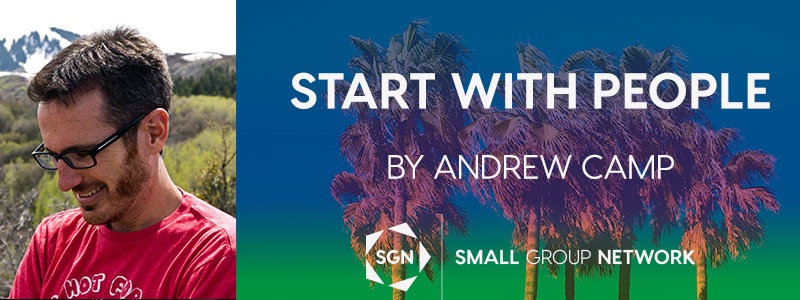Start with people. Sounds obvious, right? After all, you and I, as small group point people, are in the business of connecting people.
But this question has come to the forefront of my mind recently, as I read Priya Parker’s excellent new book The Art of Gathering: How We Meet and Why It Matters. We spend most of our time in gatherings, and truth be told, most of them are lackluster, and we leave feeling like we just wasted a couple of hours that we will never get back. We rely too much on tradition and convention, instead of thinking outside the box. Or worse yet, we rely on what Parker calls “the Martha Stewart approach, elevating the readying of things over the readying of people” (page 158).
After reading this quote, I looked over an email I will often send new leaders as they prepare for their first meeting, and was convicted. My email to leaders covers all the logistical issues for them, but not readying people. Have name tags, have enough seats, have food, hand out materials, introduce everyone, end on time, etc. Logistics are good, and it can be helpful to new leaders in order to relieve some of the anxiety in leading their first meeting.
But if I simply give them logistics, and nothing more, I will be tempted to allow myself and my leaders settle for ordinary and tradition, over and against, opening up the possibilities for the Spirit to invade and do something new and exciting.

The question I need to be asking, especially as I prepare for our next big small group push, is: What do I want people to experience? Once I have answered that question, everything should flow from that answer, from how I train leaders to how I frame the ask in the big room to how my leaders frame their invite.
My small group leaders, first, and then the whole congregation, needs to know that small groups aren’t just another event to add. They need to know that when they show up that there is no need to hide and pretend, but that they can, despite what culture might teach us, put down their guard and their defenses, and find the true and everlasting hope that we all crave: the love of God and the love of others.
But this can only happen if I make a commitment to readying people and not just readying things.
Author
-
Andrew Camp has an MA in Spiritual Formation and Soul Care from Talbot Seminary. He is also a professionally trained chef, most recently as the sous chef at Silver Restaurant in Park City, UT until it closed in 2015. Since then, he has served as the Spiritual Growth Pastor at Mountain Life Church in Park City. He and his wife, Claire, live just outside of Park City with their two young daughters, Hazelle and Hannah.
View all posts





